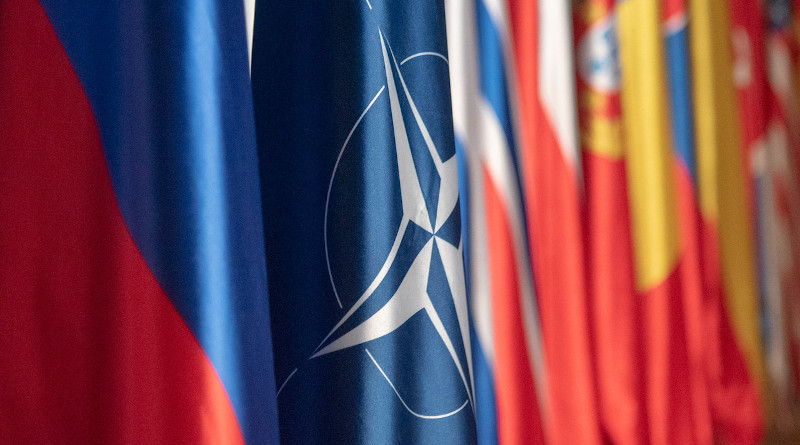NATO The Only Real Military Bloc: And Still On Expansion Mode – OpEd
By Patial RC
The 2022 Russia-Ukraine conflict has given the US led NATO (North Atlantic Treaty Organization) an opportunity to further consider expanding and enhancing the NATO beyond its normal range of borders to globalize NATO.
NATO was founded in response to the threat posed by the Soviet Union and the creation of the Alliance’s was part of a broader effort to serve three purposes: deterring Soviet expansionism, forbidding the revival of nationalist militarism in Europe through a strong North American presence on the continent, and encouraging European political integration.
The current 30 member states of NATO are Albania, Belgium, Bulgaria, Canada, Croatia, the Czech Republic, Denmark, Estonia, France, Germany, Greece, Hungary, Iceland, Italy, Latvia, Lithuania, Luxembourg, Montenegro, the Netherlands, North Macedonia, Norway, Poland, Portugal, Romania, Slovakia, Slovenia, Spain, Turkey, the UK and the US.
Article V of the North Atlantic Treaty states that “an armed attack against one or more member states in Europe or North America shall be considered an attack against them all”—and focus on confronting challenges outside the membership.
The NATO Summit being held in end June in addition to the 30 member states, nonmembers are being invited to participate in the summit including Sweden and Finland which are interested in joining NATO. Partners far away in the Asia-Pacific such as Japan, South Korea, Australia and New Zealand will also attend. Following the expansion into Eastern Europe and its involvement in the War in Afghanistan, NATO is eager to take the Russia-Ukraine conflict as an opportunity to globalize the organization.Apart from traditional security, NATO’s current strategic aspects has covered the oceans, cyberspace, space, counter-terrorism, climate and even investment, infrastructure and other areas, with the help of which NATO could enlarge the global network.
The US has announced a cash injection to boost Southeast Asia’s climate, maritime and public health infrastructure as Association of Southeast Asian Nations (ASEAN) leaders discuss shared concerns over China’s rise in the region.This is the first ASEAN meeting in Washington and first to be hosted by a US President since 2016.US President Joe Biden on 09 May 2022 announced the nomination of Yohannes Abraham as ambassador to the ASEAN as he wrapped up talks in Washington with leaders of the 10-country bloc.The first-ever meeting of the two-day ASEAN summit to be held in Washington comes as the US seeks to solidify ties with Southeast Asian countries as part of its Indo-Pacific strategy in response to China’s expansion.Earlier US Vice President Kamala Harris said that “the US and ASEAN have shared a vision for this region, and together will guard against threats to international rules and norms,” appearing to allude to Beijing’s military presence in the South China Sea.ASEAN brings together ten Southeast Asian states; Brunei, Cambodia, Indonesia, Laos, Malaysia, Myanmar, the Philippines, Singapore, Thailand and Vietnam.
The Quad is a grouping of the US, India, Australia and Japan. The Quad of the future may be Quad plus or Quad by geographical directions to counter the spread of Chinese influence across all spheres.Lately a ‘Middle Eastern Quad’ (US, Israel, UAE, and India) has taken shape to counter China. The new avatar of the Quad(s) has emerged as a force to resist Chinese maritime aggression as it is expanding its maritime presence across the South China Sea, the Indian Ocean, from the Straits of Malacca to the shores of East Africa and parts of Europe.The Quad is not an Asian NATO and has no commitment to collective security.Quad also aims to build partnerships with ASEAN, as they could be beneficiaries of these initiatives, and need not depend solely on China.
The AUKUS is a trilateral military security alliance deal between Australia, the UK and the US in which the three nations have committed to protecting the Indo-Pacific from China’s dominance and built a class of nuclear-propelled submarines. It is a military alliance. In its first project, the US and the UK have committed to help Australia in developing and deploying nuclear-powered submarines.The AUKUS will only focus on the military developments to protect the Indo-Pacific from China’s dominance and shield the post-1945 global order.
US led NATO is eager to take the Russia-Ukraine conflict as an opportunity to globalize the organization. US collective partnership and new associations are a way win allies into the bloc to confront Russia and China. The three European powers would like not just the US but the US plus Germany, France and the UK to lead the security architecture that is under construction in the Indo-Pacific to combat attempts at invasion of sovereignty and territorial integrity, including within the global commons in the area, such as the South China Sea. While Japan, Australia and South Korea have followed the US lead thus far, including by taking NATO’s side. In the Indo-Pacific, the US is leading the Asia-centric formation.The AUKUS, Quad and efforts to build partnerships with ASEAN is all towards enhancing to globalize the NATO influence to counter China’s influence ,dominance in South China SEA and in the Indo-Pacific .NATO happens to be the only real Military Bloc in the present world scenario led by the US.

